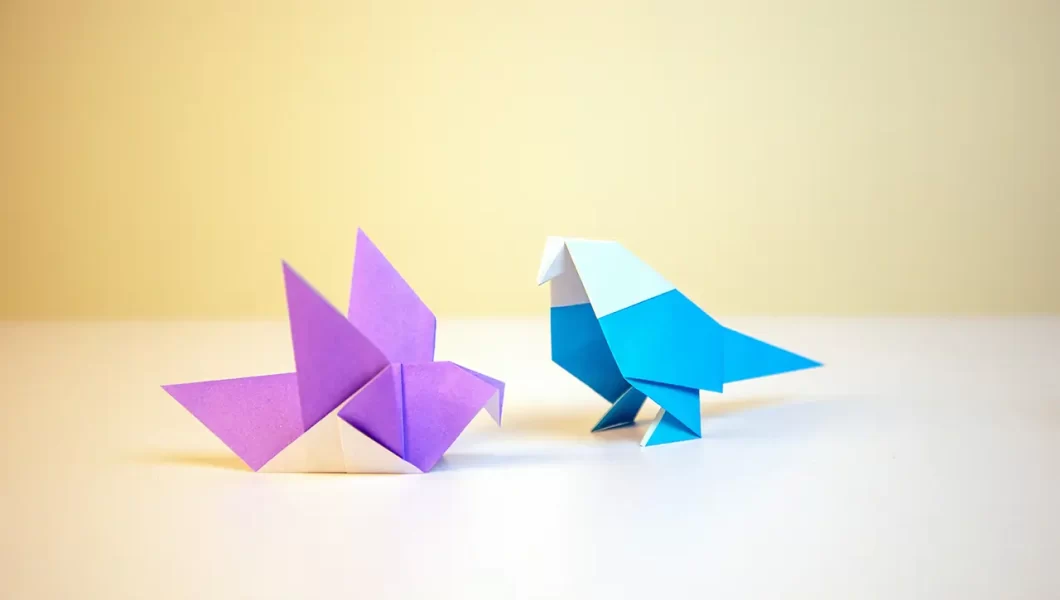Origami, the intricate art of paper folding, has a rich history that stretches back centuries. Its exact origins are somewhat shrouded in mystery, but many believe it to have originated in Japan during the 17th century. The word “origami” itself is derived from two Japanese words: “ori,” meaning fold, and “kami,” meaning paper.
Origins of Origami
The precise origins of origami are not definitively documented, but it is generally believed to have begun as a recreational activity among the Japanese nobility during the Edo period (1603–1867). Initially, only the wealthy practiced the art because they had access to high-quality paper. They would fold paper into various shapes, often to adorn gifts or as part of ceremonial rituals.
Evolution of Origami
Origami gradually evolved over time, spreading beyond the aristocracy and becoming more accessible to the general population. As paper became more affordable and widespread, folding paper began to flourish as a popular pastime among people of all social classes. The techniques and designs were passed down through generations, often through oral tradition and apprenticeship.
One of the most significant developments in the paper-folding art was the creation of a system of folding diagrams, which allowed for the replication of designs without the need for direct instruction. This innovation helped democratise the art and contributed to its spread both within Japan and internationally.
Origami’s influence extended beyond Japan, particularly in the 20th century. During this time, Japanese immigrants carried the art form to other parts of the world, where it captured the imagination of people from diverse cultural backgrounds. Origami became a symbol of Japanese culture and craftsmanship, celebrated for its elegance and precision.
Modern-Day Origami
In contemporary times, the old art has evolved into a global phenomenon, with practitioners and enthusiasts from all corners of the globe. Its appeal lies not only in its aesthetic beauty but also in its therapeutic and educational value. It is often used in educational settings to teach geometry, spatial reasoning, and problem-solving skills.
Origami, the traditional Japanese art of paper folding, has captivated people around the world for centuries. From simple designs to intricate masterpieces, origami is more than just a craft – it’s a form of expression, creativity, and meditation.

One of the most appealing aspects of origami is its accessibility. All you need is a piece of paper and a set of instructions, which you will find in books, online tutorials, or even through trial and error. Despite the simplicity, it offers endless possibilities for creativity.
Furthermore, origami provides numerous benefits beyond the joy of creating something beautiful. For many, folding paper can be a therapeutic activity, helping to reduce stress and promote mindfulness. The repetitive motions and focus required during origami can have a calming effect on the mind, similar to meditation.
Origami also stimulates cognitive abilities and improves fine motor skills, making it an ideal activity for children and adults alike. By following step-by-step instructions and manipulating paper, practitioners enhance their spatial awareness, problem-solving skills, and attention to detail.
Moreover, it encourages experimentation and innovation. While traditional designs serve as a foundation, many enthusiasts enjoy exploring new techniques, shapes, and patterns to create unique artworks. The versatility of origami allows for endless exploration and personalisation.
From simple animals and flowers to complex modular structures, the possibilities with origami are truly limitless. Whether you’re a beginner or an experienced folder, there’s always something new to learn and discover in the world of origami.
This fascinating hobby also fosters a sense of community among enthusiasts. With the rise of social media and online forums, individuals from around the world can connect, share ideas, and inspire each other through their creations. Collaborative projects, workshops, and exhibitions further showcase the beauty and diversity of origami.
Conclusion
In conclusion, origami is more than just a pastime – it’s a reflection of human creativity, ingenuity, and interconnectedness. Through the simple act of folding paper, we can unleash our imagination, cultivate mindfulness, and connect with others on a global scale. So why not pick up a piece of paper and start folding? You never know where your journey might take you.
Thank you for reading!
Do you have any origami creations or stories to share? Feel free to leave a comment below!








No Comments